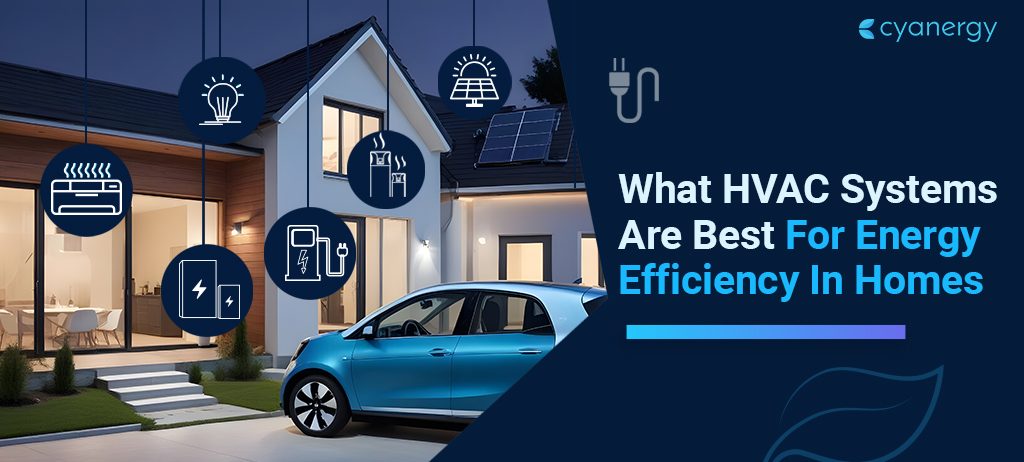LG is a name of trust; LG has made life easier for many around the globe. I’m pretty sure you are well familiar with the brand, at least at surface level. They are a mass producer of home appliances, televisions, home theatre systems, solar panels, and so on. As big as this company is, yet they joined the solar manufacturing game pretty late compared to the other manufacturers. However, they are still one of the biggest names in the history of the solar industry.
This article is all about LG solar panels review, and how they climbed to the peak of success. If you are interested in getting a solar PV system for your house, which you probably are, judging from the fact you are reading my article right now, LG solar panels are the ones you should really pay attention to.
Here is a complete LG solar panels review in its entirety. I hope this will help you make a decision.
LG Solar Panels Review
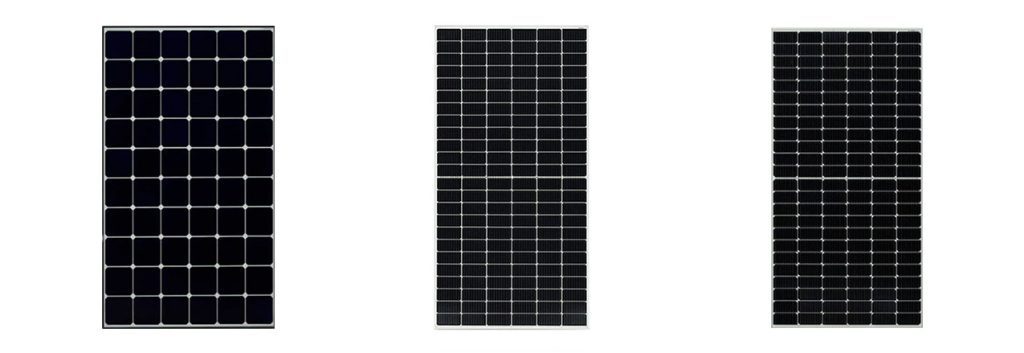
About LG Solar Panels
With more than 50 years of experience as a global pioneer in electronics technology, LG stands ready to harness the power of the sun for you. It is a global company, founded in South Korea back in 1958. At first, the company was named ‘Goldstar,’ and they changed it to LG electronics after they had successfully merged with ‘Lucky Chemical’ in 1995. Can you make the connection of the name now? It stands for ‘Lucky Goldstar’ or LG as we know it today. Life’s good is only the tagline of the company.
Their global revenue is around 54.4 billion USD, and that is a solid indicator of their enthusiasm towards modern technology and how much people adore and trust the brand.
LG had done about 30 years’ worth of research and development on silicon crystalline cells before they even began manufacturing solar panels. After they had laid a robust foundation and were confident of their craft, they started manufacturing solar panels in 2009 at Gumi, South Korea. They are currently producing 6th generation panels, and they produce over 2GW of panels in a single year.
Although in Australia, LG is considered to be an expensive option, but you will be astounded to know that they have a panel return rate of 40 in a million. It is clear that their price point is justified, and even though they are an expensive alternative to most, Australian homeowners who have installed LG solar panels are completely satisfied with the results. The majority of solar experts will agree as well.
Where Is LG Solar Panel Made Or Manufactured?
It is a South Korean multinational conglomerate, and they also manufacture their solar panels in Gumi, South Korea. They also manufacture their solar panel in Huntsville, Alabama, which has a total capacity of 550MW. Both of the manufacturing plants are directly overseen by LG themselves. According to them, they feel heavily accountable for their quality of the panels, and under no circumstances they will compromise that by outsourcing them.
Under stringent quality control procedures, LG controls every aspect of panel manufacturing. They also test the panels in a laboratory that is certified by TÜV Rheinland and Underwriters Laboratories. In order to live up to the reputation and retain the trust of their customers, LG does everything it can.
They have no other manufacturing plants. This shows how committed they are and their dedication towards serving people with high-quality products only.
Cell Technology Of LG Solar Panels
LG understands that you are trying to make a positive impact on the earth by choosing to go green and meanwhile cutting off on your electric bills because this is a big investment, and you must have a healthy return on investment (ROI). Keeping that in mind, LG has brought Cello technology into the solar system industry so that you can effectively contribute towards green earth while you get your desired ROI.
Cello technology is incorporated in every NeON 2 model, and here is how it works.
- Usually, solar cells tend to have 3 to 5 busbars in each cell. A busbar is a thin strip of copper or aluminum between cells that conducts electricity. Instead of that, in cello technology incorporated modules, there are 12 thin busbars. They help the sunlight photons to navigate more pathways to enter into the solar cells and produce more electrical energy. This also reduces power generation loss due to microcracks that a regular solar cell has.
- Traditional p-type solar panels have a lot of B-O (Boron-Oxygen) pairs, which sabotages the solar cell’s ability to generate electricity by eliminating power generating electrons. However, these panels are not p-type; they are n-type, and they are phosphorus-based. This is the reason why cello technology allows the panels to experience almost zero Light-Induced Degradation (LID).
- They feature circular wires which conduct more electricity than the regular panels.
- All the NeON 2 panels have double-sided cells. So, they not only generate power from the front but also from the back. The back gets the reflected energy absorbed to fasten the process.
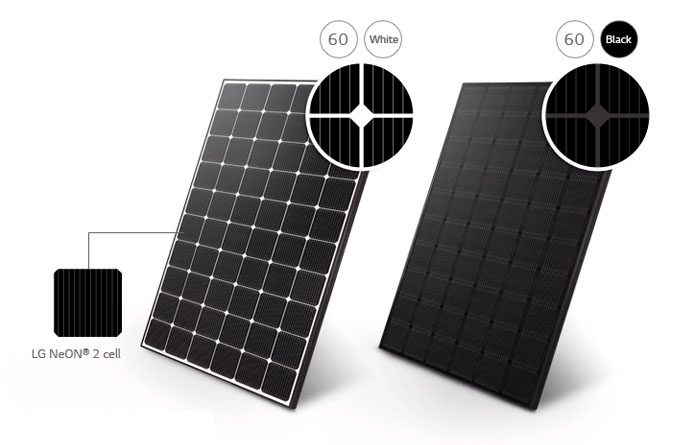
The n-type solar cells are extraordinarily efficient and extremely good at generating electrical energy. But they can be a tad bit expensive. That’s why LG also has a comparatively cheaper range of highly effective solar panels called ‘Mono X Plus.’ This series features p-type monocrystalline solar cells, which comparatively is less expensive than the n-type panels.
All in all, LG only manufactures Monocrystalline panels that feature other different spectacular technologies. Most of the solar panel models of LG are bifacial and monocrystalline.
Being a bifacial panel means they are able to generate electricity from both the front and rear end of the panels because they have the ability to absorb reflected sunlight and use it further.
Available Models & Types Of LG Solar In Australia?
Here Are Some Of The Available Models Of LG Solar Panels In The Australian Market:
LG Mono X Plus
- Module efficiency is up to 20.2%
- 15 years of product warranty High energy output of up to 450W
- Features half-cut cell (120 cells) technology for high efficiency
- Monocrystalline panels
- Perfect for residential setting or commercial
- 25 years of performance warranty with a minimum installation of 100kW only.
- Weighs about 19.4 kg only for easy installation
- Frame thickness is about 40mm
- Sleek and aesthetically pleasing design
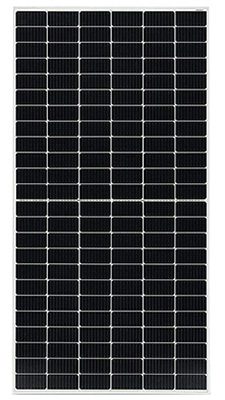
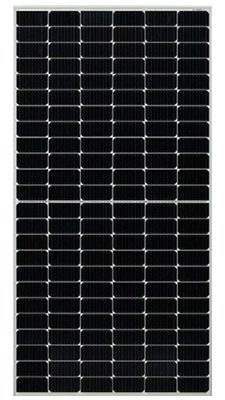
Neon 2
- Features the award-winning Cello technology
- There are a total 4 variants of the Neon 2 series. All black, Neon 2 bifacial, Neon 2 60-cell, and Neon 2 72-cell.
- This series has an efficiency rate of a maximum of 20.7 to a minimum of 20.1%
- It has a product and performance warranty of 25 years
- It has n-type monocrystalline silicon cells
- Has a total of 60 solar cells per solar panel
- 30% more energy generation than traditional PV Modules
Neon R
- Maximum model efficiency 22%
- There are a total 3 variants of the Neon R series. Neon R, Neon R Ace, Neon R prime.
- Suitable for a residential setting
- Every variant of this series eliminates electrodes on the front to minimize shading issues
- 25 years of performance and product warranty
- Aesthetically pleasing looks
- Each panel has 60 cells
- Features high-quality n-type IBC cells
- Extremely low degeneration rate
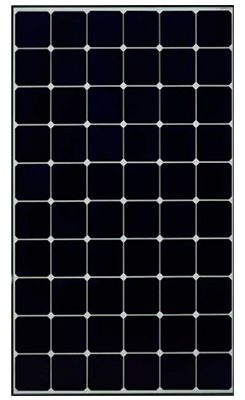
Efficiency & Performance
The efficiency of a solar panel denotes how much sunlight the panels can absorb and later turn into energy. The ratio of being able to capture sunlight and producing energy is used to calculate the efficiency rate of solar panels.
LG solar panel has an efficiency rate of up to 22%. I know that does not sound like a lot. To put things into perspective, you should know that in the history of solar panels, the highest efficiency rate of any solar panel used in a residential or commercial setting has only been 22.6%. Now, if you compare the two numbers, you can assume how amazing 22% efficiency is.
Performance-wise, LG is doing tremendously as well. To elaborate briefly on performance, you should know about the temperature coefficient. Ideally, for a solar panel to operate at peak efficiency, the temperature should be around 25-degree-Celcius. But if it crosses even a degree above that, the efficiency rate drops by the panels’ temperature coefficient. The closer the temperature coefficient is to zero, the better is its performance.
Difference Between LG Solar Panels Model
| LG Mono X Plus | LG Neon 2 | LG Neon R | |
|---|---|---|---|
| Power (W) | Upto 450 | Upto 450 | Upto 440 |
| Cell Number | 120 | 60-72 | 60 |
| Cell Type | Monocrystalline N-Type | Monocrystalline N-Type | Monocrystalline N-Type |
| Efficiency (%) | 20.2 | 20.1-20.7 | 21.8-22.3 |
| Size | 1776 X 1052 X 40 Mm | 1700 X 1016 X 40 Mm | 1740 X 1042 X 40mm |
| Weight (KG) | 19.4 | 18 | 18.5 |
| Features | Monocrystalline Half-Cut Cell Technology For High Efficiency | Monocrystalline Half-Cut Cell Award-Winning Cello Technology For High Efficiency | Monocrystalline Half-Cut Cell Technology For High Efficiency With IP 68 Rating |
| Operational Temperature Range | -40°C To 90°C | -40°C To 90°C | -40°C To 90°C |
| Annual Power Degradation | No More Than 0.40% | No More Than 0.33% | No More Than 0.33% |
| Product Warranty | 15 Years | 15 Years | 15 Years |
| Performance Warranty | 25 Years | 25 Years | 25 Years |
Pros & Cons Of LG Solar Panel
There are good and bad in everything. Although LG is packed with mostly good qualities, here are some of LGs both good and bad qualities.
Pros
- Maximum efficiency of the panels goes up to 22%
- Every panel is monocrystalline, which is superior to polycrystalline
- The cello technology invented by LG is revolutionary, with n-type solar cells being featured
- There are also comparatively cheaper alternatives with p-type solar cells that are highly efficient
- The temperature coefficient of LG solar panels is very low, almost close to zero.
- LG has done 30 years’ worth of silicone crystalline research before manufacturing panels. They are rich in R&D and invest a lot in R&D to improve and innovate.
- Their panel return rate is 40 in one million.
- Modern and classy design to keep homeowners’ rooftops looking great.
- Bifacial solar panels for extra energy generation.
- Very low energy degeneration rate for each LG panels
- Warranties are given with every LG panel starting from 15 years to a maximum of 25 years, depending on the model.
- Half-cut cells in many models of LG solar panels for better performance.
Cons
- The only possible drawback I can think of is the price point. LG panels are priced higher than their competitors. However, their panel qualities and overall brand reputation make up for it.
Performance Warranties
LG solar panels come with at least 15 years of warranty on every solar panel. There are panels that have 25 years of product and performance warranty as well. You don’t have to worry a bit about LG product warranties; LG regulates the process pretty well. If you want to know more about the product and warranty, please contact Cyanergy.
Does LG Have An Office In Australia?
As a matter of fact, yes! They do. So, if you ever face any issues with your LG solar panels, you can directly contact them yourself. Their office is in new south wales, Australia. If you wish to get personal assistance and have any further questions, please contact Cyanergy.
Are LG Solar Panels Any Good?
LG is a brand that is celebrated globally. With billions of dollars of revenue, this brand has made it to the top of the industry. LG solar panels offer you a maximum efficiency of 22% that is the second-highest efficiency ever achieved by any solar panels that are used for commercial and residential purposes. They did years of research just to stand firmly in their place and make no mistakes while serving their customer. They always have the best interest of their customer in mind.
All of the LG solar panels are crafted with perfection and precision in their in-house manufacturing facilities. So, overall, not only LG solar panels are good, they can even be called one of the best solar panels in the industry.
Conclusion
As we are moving forward with a dream to make the earth a greener place, LG is positively contributing to that goal by inventing efficient solar panels. In this LG solar panels review article; I have covered every aspect of LG solar panels that will help you to know a bit more about them.
However, I understand that you still might have some confusions left. In that case, please contact Cyanergy so that we can set you up with one of our solar experts to give you even more insight.
FAQ
How Long Do LG Solar Panels Last?
Answer: LG solar panels are considered to be a long-term investment. They last about 25 years although the efficiency might drop by 0.33%-0.40% each year, but it will still generate electricity till it turns 25.
What Is The Most Expensive Part Of Solar Panels?
Answer: Highly pure silicon is one of the factors that contribute to the price point. LG uses highly pure silicon ingots for their monocrystalline panels.
